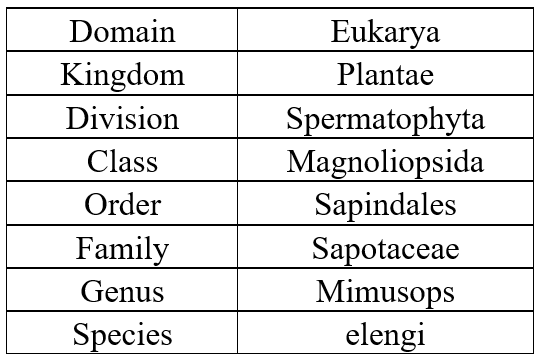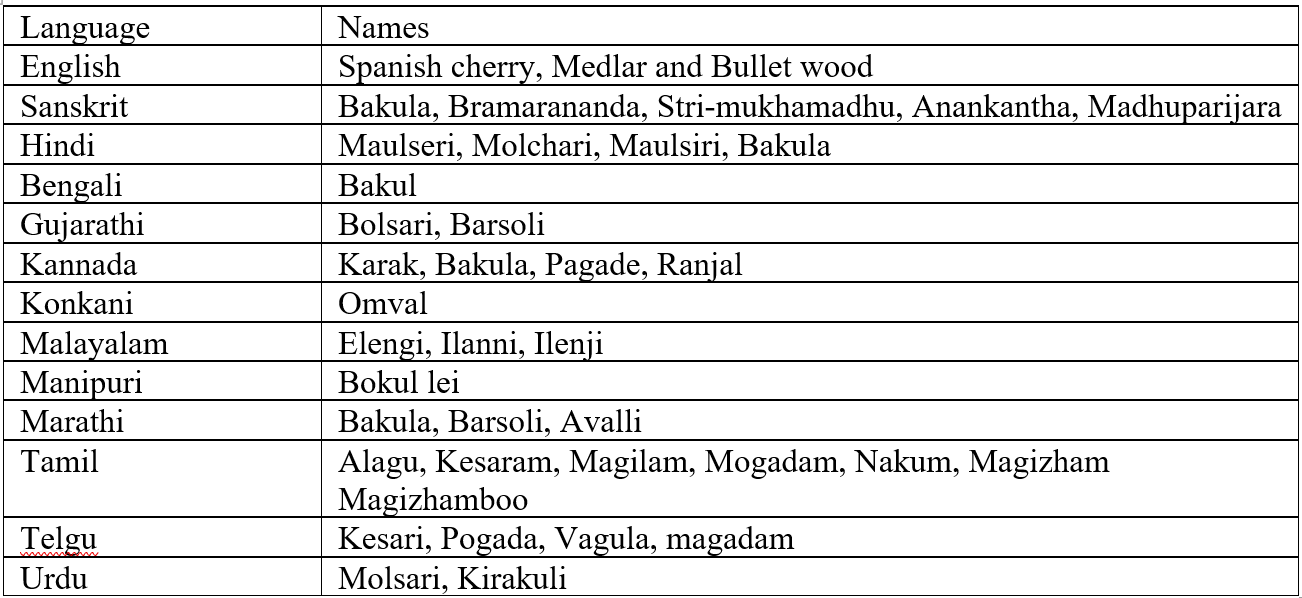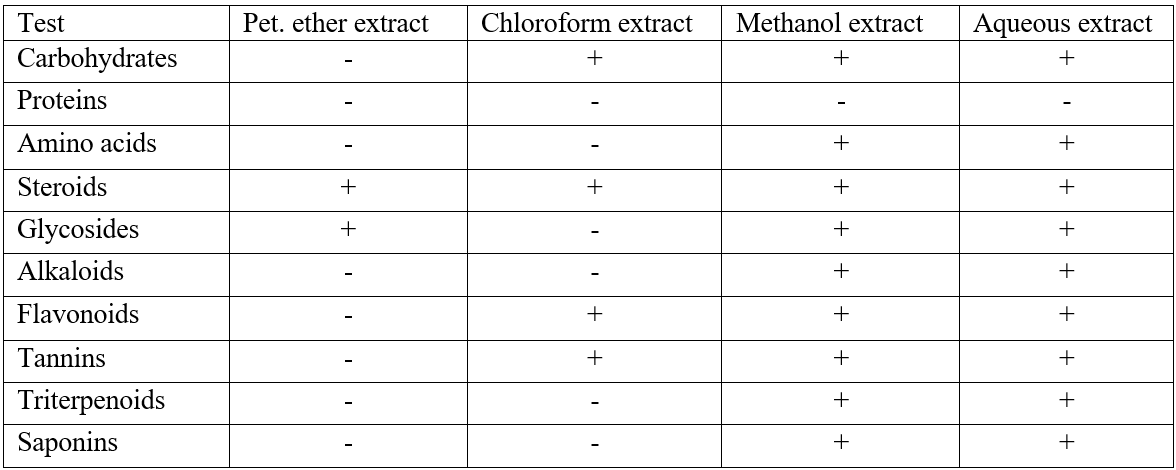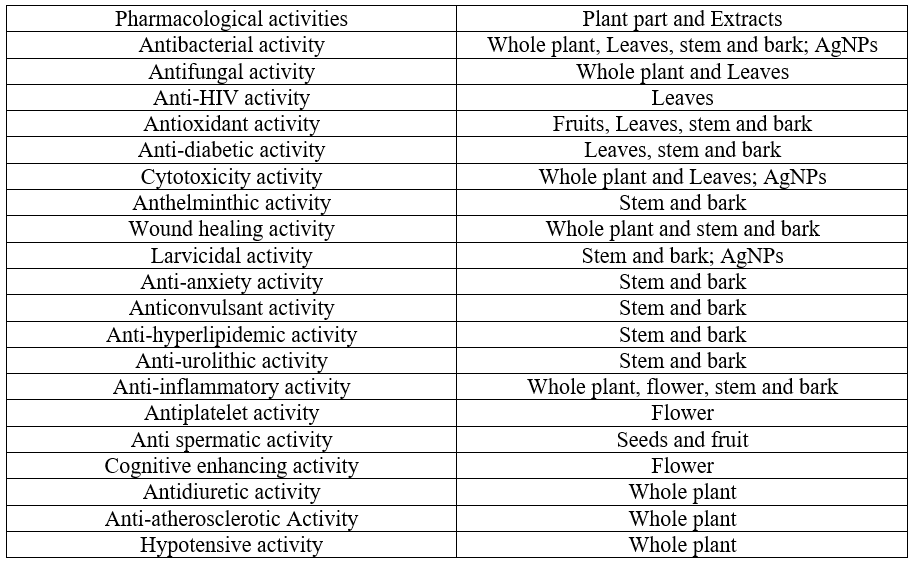This article delves into the multifaceted significance of Mimusops elengi, commonly known as Bakul, weaving together threads of cultural, historical, and pharmacological importance. Rooted in ancient Indian scriptures, Bakul emerges as a symbol of cultural reverence, finding applications in architecture, religious ceremonies, and traditional medicine. Beyond its cultural ties, the tree's adaptability across diverse ecosystems underscores its ecological resilience. Chemical analyses unveil Bakul's nutritional richness, positioning it as a sustainable food source. Simultaneously, its secondary metabolites present pharmacological potential, with documented antioxidant, antibacterial, antifungal, antidiabetic, anticancer, hypotensive, and diuretic properties. Ayurvedic insights align with contemporary research, propelling Bakul into the realm of evidence-based healthcare practices. The conclusion emphasizes Bakul's dual identity, straddling tradition and modernity, beckoning further research to unlock its full therapeutic potential. As a botanical marvel, Bakul invites scholars to traverse the bridge between ancient wisdom and scientific rigor, fostering a holistic understanding that transcends cultural boundaries. This study contributes to the ongoing discourse on botanicals, advocating for an integrated approach that marries traditional knowledge with contemporary research for sustainable and effective healthcare solutions.
Anti-diabetic activity, Antioxidant activity, Mimusops elengi L., phytochemicals, traditional uses
The Mimusops elengi, a medium-sized evergreen tree of the Sapotaceae family, has a rich history that spans across geographical boundaries. Native to India's Western Ghats, it has numerous vernacular names – Spanish cherry, Medlar, and Bullet wood in English, and Bakul across various Indian languages, reflecting its cultural significance. Its presence in ancient Indian epics like Ramayana, Mahabharata, and Abhijnana Shakuntala whispers tales of its prehistoric reverence.(1) Despite their historical dietary significance, Mimusops elengi fruits are now rarely consumed by humans in India. This tradition seems to have dwindled considerably. Presently, these fruits serve as a food source primarily for wildlife, including bats, parrots, crows, squirrels, monkeys, goats, and cows.
Table 1 : Taxonomic rank of Mimusops elengi

2. Plant Profile
The Mimusops elengi, commonly known as Bakul, transcends its simple classification as a tree. It exemplifies a captivating interplay of utility and aesthetics. Reaching up to 20 meters with a 1-meter trunk diameter, this evergreen dominates the landscape. Its sturdy trunk is enveloped in dark brown, fissured bark, hinting at its underlying resilience. Straight branches extend outwards, supporting a dense canopy of verdant foliage. Each leaf showcases meticulous design - small, narrow, and glossy with a vibrant green hue and characteristic wavy margins. These leaves, measuring 5–16 cm long and 3–7 cm wide, play a vital role in photosynthesis, providing life-giving shade.(2,3) Beneath the bark lies a core of deep red wood, a testament to the tree's strength. This prized heartwood, renowned for its hardness and intricate grain patterns, fuels human creativity. The exquisite carvings adorning temples and palaces across South India stand as silent witnesses to the Bakul's enduring contribution. Every year, the Bakul undergoes a spectacular blooming event. Between March and June, the tree comes alive with star-shaped blossoms, resembling an ethereal constellation of yellowish-white. These delicate and fragrant flowers, clustered in intimate groups, weave their magic into the air with their lingering scent even after wilting. Temple garlands woven from these blossoms carry cultural significance, symbolizing devotion and divine essence.
Following pollination, the tree embarks on fruit production. Eight to ten weeks later, ovoid-shaped fruits measuring 2–2.5 cm emerge on the branches. Initially green, they ripen into a vibrant display of yellow, orange, and fiery red, showcasing the sun's influence. Unripe fruits possess an astringent taste, while ripe ones offer a delightful sweetness, attracting both humans and wildlife. Each fruit encloses one or two ovoid seeds, perpetuating the tree's life cycle. The Bakul thus emerges as a multifaceted wonder. Its impressive stature commands respect, its robust wood fuels human creativity, and its fruits nourish both humans and wildlife. This botanical marvel, intricately woven into the fabric of human culture and ecosystem, serves as a poignant reminder of the interconnectedness and beauty of the natural world.(4.5)
Analyses of Mimusops elengi leaves have revealed the presence of various beneficial compounds. These include quercitol, hentriacontane, ?-carotene, D-mannitol, ?-sitosterol, ?-D-glucoside, and quercetin in ethanolic extracts. Additionally, studies report the presence of tannins, alkaloids, saponins, cardiac glycosides, steroids, flavonoids, and reducing sugars within the leaves. The bark of the Mimusops elengi tree is another source of interesting chemical compounds. Research has identified a new farnane-type pentacyclic triterpene named Farnan-2-one-3 beta-ol (mimusopfarnanol) alongside other known triterpenoids like farnan-3-one, olean-18-en-2-one-3-ol, and lup-20 (29)-en-3 beta-ol. Mimusops elengi L. seeds harbor a fascinating array of chemical compounds. Analysis reveals the presence of alpha-L-arabinopyranoside, gallic acid esters (including phenyl propanoxyl gallate), alpha cadinol, tau muurolol, hexadecanoic acid, diisobutyl phthalate, and octadecadienoic acid. Additionally, a new minor triterpenoid saponin, mimusin (3-O-[beta-D-glucopyranosyl- (1-->6)-beta-D-glucopyranosyl]), has been isolated from the seeds. The fatty oil component is rich in capric, lauric, myristic, palmitic, stearic, arachidic, oleic, and linoleic acids. The unsaponifiable matter from the seed fat is comprised of beta and alpha-sitosterol. Interestingly, glucose is present in the mesocarp, testa, and kernel of the seeds.(9,10,11,12)
4. Use in traditional medicine
The Bakul tree (Mimusops elengi L.) plays a significant role in traditional Indian medicine, particularly Ayurveda. Ayurvedic texts mention its therapeutic potential. Each part of the Bakul tree contributes to a wide range of natural remedies. According to Ayurvedic principles, the Bakul's properties are valued for their ability to balance specific bodily forces. This knowledge translates into specific formulations targeting distinct aspects of the tree's therapeutic potential.(13,14,15) Evidence suggests the Bakul's medicinal use extends beyond traditional formulations. In the past, powdered bark and tender stems were employed for oral hygiene. Modern practice recommends Bakul decoctions for various dental ailments. Its properties are believed to soothe gums, reduce inflammation, and potentially address certain dental issues. The healing properties of the Bakul extend beyond the mouth. Decoctions prepared from the bark and leaves are used for cleansing wounds, alleviating gum inflammation and bleeding, and may even possess anti-ulcer and fertility-enhancing properties. Research suggests its versatility in addressing various health concerns, including heart health. The Bakul's influence extends to the respiratory system. Preparations from dried flowers are used to treat a specific illness. Its properties are believed to offer relief from headaches and promote wound healing.
The Bakul fruit also finds its place in traditional medicine. Its natural properties are believed to be effective against certain digestive issues. Unripe fruits are used as a natural remedy for loose teeth, while ripe fruits are thought to offer general health benefits and potentially aid in childbirth. Additionally, the Bakul may offer relief from urinary issues. The Bakul tree exemplifies the enduring wisdom of traditional medicine. Historical applications and ongoing research highlight its diverse therapeutic properties. Further exploration of the Bakul's chemical composition may unlock even more secrets, solidifying its role in holistic well-being.(16,17,18,19)
5. Pharmacological activity
Antioxidant effects
Studies reveal the impressive antioxidant properties of various parts of the Bakul tree (Mimusops elengi). Leaves and fruits, in particular, have been shown to effectively combat free radicals and reactive oxygen and nitrogen species (ROS and RNS). These harmful molecules damage cellular components like DNA, lipids, and proteins, and inhibiting their formation or scavenging their effects is crucial for maintaining good health. Research investigated the leaves' antioxidant potential, revealing a methanolic extract with potent free radical scavenging activity, even surpassing a well-known antioxidant at higher concentrations. This suggests the leaves may be a rich source of natural antioxidants. Fruits also exhibit a fascinating interplay between ripening stages and antioxidant capacity. Crude extracts from immature fruits showed the highest free radical scavenging activity, followed by mature and ripe fruits. However, when separated into components, mature fruits displayed the strongest activity, likely due to a specific compound. This suggests this compound plays a key role in the antioxidant properties of mature fruits. While research showed the Bakul stem bark also possesses antioxidant properties, its potency was lower than a common antioxidant. Nevertheless, this finding adds another dimension to the tree's overall antioxidant profile. The Bakul tree thus emerges as a promising source of natural antioxidants. From the potent leaf extracts to the dynamic interplay of ripening and antioxidant capacity in fruits, the Bakul offers a remarkable arsenal for combating free radical damage. Further exploration of the Bakul's components and their potential applications in human health hold significant promise. As scientific inquiry deepens, the Bakul's antioxidant potential may offer powerful weapons in the fight against oxidative stress and related diseases.(20,21,22,23,24)
Antibacterial activities
For decades, antibiotics have been the cornerstone of fighting bacterial infections. However, their effectiveness is under increasing threat from the rise of drug-resistant bacteria. Factors like improper antibiotic use and incomplete treatment courses fuel this rise, leading to prolonged illnesses, increased mortality, and a critical need for novel antibacterial agents. This scenario has shifted scientific focus towards natural products and their potential as alternatives. The Bakul tree (Mimusops elengi) has emerged as a promising candidate in this exploration. Studies have investigated its antibacterial properties against various bacterial strains. Research has shown the efficacy of Bakul leaf extracts against specific bacteria, while investigations using extracts from bark, fruits, and leaves observed selective activity against Gram-positive organisms. Interestingly, stem bark extract has been found to be a broad-spectrum defender, while certain compounds isolated from Bakul seeds exhibited potent activity against specific pathogens.(25,26,27,28) These findings highlight Bakul's potential as a source of natural antibacterial agents. The diverse extracts exhibit selective and potent activity against a range of bacterial strains, offering a glimmer of hope in the fight against resistance. However, further research is crucial. Isolating and characterizing the active components within Bakul, along with understanding their mechanisms of action, are essential steps. Additionally, optimizing delivery methods for these natural compounds is necessary for their potential translation into clinical applications. Recent advancements in research methods open exciting avenues for Bakul exploration. Techniques like bioassay-guided fractionation and mass spectrometry can pinpoint the specific bioactive compounds responsible for the antibacterial activity. Additionally, in vivo studies can assess the efficacy and safety of these natural extracts in animal models, paving the way for human clinical trials. As scientific inquiry delves deeper into Bakul's antimicrobial properties, it may unravel potent natural weapons against a growing public health threat. The Bakul tree, with its readily available resources and promising preliminary research, holds immense potential as a natural ally in the fight against antibiotic resistance.(25,28,20)
Antifungal effects
The emergence of opportunistic fungal infections presents a growing public health concern, particularly for immunocompromised individuals. Current antifungal mainstays, like fluconazole and itraconazole, while effective, often come with undesirable systemic side effects. This necessitates the exploration of safer and more efficacious alternatives. The Bakul tree (Mimusops elengi) has emerged as a promising candidate with potential antifungal properties. Limited research has investigated Bakul's antifungal potential. Researchers conducted a preliminary study using petroleum ether, ethyl acetate, and methanolic extracts from bark, fruits, and leaves against various fungal strains (Penicillium sp., Aspergillus niger, Candida albicans). While demonstrating some antifungal activity, the extracts exhibited lower potency compared to the positive control (fluconazole). These findings, although encouraging, suggest the need for further exploration and optimization of Bakul's antifungal potential. Several avenues warrant investigation to fully harness Bakul's capabilities. Firstly, a comprehensive in vitro evaluation against a broader panel of fungal strains is crucial. This panel should encompass not only commonly encountered pathogens but also emerging drug-resistant fungi. Such an investigation would provide a more robust understanding of Bakul's spectrum of activity and potential effectiveness against clinically relevant infections.
Secondly, optimizing extract concentration and delivery methods is essential. Fungal susceptibility testing using different extract concentrations can help identify the minimum inhibitory concentration (MIC) and minimum fungicidal concentration (MFC). Additionally, exploring various delivery methods, such as nanoparticles or liposomes, could enhance the bioavailability and efficacy of Bakul extracts. Thirdly, isolating and characterizing the specific bioactive compounds within Bakul extracts hold immense potential. Modern techniques like bioassay-guided fractionation and mass spectrometry can pinpoint these key antifungal components. Subsequent studies on their mechanisms of action would provide valuable insights for targeted therapeutic development. Bakul's multifaceted therapeutic profile adds further weight to its exploration. Research suggests diverse pharmacological properties, including antioxidant, antibacterial, and anti-inflammatory effects. This holistic therapeutic potential necessitates a comprehensive investigation of Bakul's medicinal value.(29,30,31) In conclusion, while initial findings regarding Bakul's antifungal activity are promising, further research is crucial. A multi-pronged approach encompassing a broader fungal strain panel, optimized delivery methods, and isolation of bioactive compounds is essential. Additionally, exploring Bakul's potential mechanisms of action can pave the way for the development of novel, safe, and targeted antifungal therapies derived from this readily available natural resource. Unveiling the secrets locked within the Bakul tree holds the potential to transform it into a potent weapon in the fight against fungal infections.
Antidiabetic effects
Diabetes mellitus, a chronic metabolic disorder characterized by hyperglycemia (elevated blood sugar), has reached epidemic proportions globally. With rising prevalence, novel therapeutic strategies are urgently needed to manage this complex disease. The Bakul tree (Mimusops elengi) emerges as a promising candidate with potential antihyperglycemic properties. Preclinical studies have shed light on Bakul's potential role in diabetes management. Studies using aqueous bark extract and methanolic stem bark extract in animal models of diabetes demonstrated significant antihyperglycemic effects in a dose-dependent manner. The extracts reduced blood sugar and glycosylated hemoglobin, while enhancing serum insulin levels and influencing hepatic carbohydrate metabolism positively. These findings suggest the extracts may stimulate insulin secretion, improve insulin sensitivity, and promote glycogen synthesis. The extracts displayed long-lasting glycemic control, with effects persisting for up to 24 hours in some cases. Importantly, no adverse systemic or neurological effects were observed, suggesting a favorable safety profile.
These studies provide compelling evidence for Bakul's potential as a natural antidiabetic agent. Its ability to modulate key metabolic pathways and demonstrate long-lasting glycemic control warrants further investigation. Future research should focus on isolating and characterizing the bioactive components responsible for these effects, along with exploring optimal delivery methods. Unveiling the mechanisms of action of these bioactive constituents will be instrumental in developing novel, safe, and effective therapeutic strategies for diabetes management. As scientific inquiry delves deeper into Bakul's antihyperglycemic potential, we may discover a valuable weapon in the fight against this global health challenge.(32,33)
Anticancer effects
While chemotherapy remains a mainstay in cancer treatment, its harsh side effects and high cost necessitate the exploration of safer, more affordable alternatives. The Bakul tree (Mimusops elengi) emerges as a potential candidate with promising antineoplastic properties.
In vitro studies have investigated the cytotoxic activity of an ethanolic Bakul flower extract against various cancer cell lines. The extract exhibited a concentration-dependent cytotoxic effect, with selectivity towards cancerous cells compared to normal cells. These findings warrant further exploration to isolate and characterize the bioactive components responsible for this cytotoxicity. Understanding the mechanism of action is crucial for developing targeted anticancer agents. Beyond cancer treatment, Bakul holds promise in the fight against fungal diseases that threaten food security. Fungal infestations contaminate crops, reduce their nutritional value, and produce harmful toxins. The overreliance on synthetic fungicides raises environmental concerns. Plant-derived metabolites like those found in Bakul leaves emerge as attractive eco-friendly alternatives. Studies have evaluated the antifungal activity of various Bakul leaf extracts against crop-damaging fungi. Notably, the aqueous, methanolic, and ethanolic extracts displayed potent antifungal activity, with the methanolic extract showing the most promise. Further fractionation revealed an alkaloid fraction with activity surpassing common synthetic fungicides. These findings highlight the potential of Bakul leaf extracts, particularly the isolated alkaloid fraction, as effective and sustainable alternatives for crop protection. Bakul's potential applications extend beyond traditional uses. Its promising antineoplastic and antifungal properties warrant further scientific exploration. Isolating and characterizing the bioactive components responsible for these activities, optimizing delivery methods, and conducting rigorous in vivo studies are essential steps. Unveiling the mechanisms of action of these bioactive constituents will be instrumental in developing safe, effective, and accessible options for combating cancer and fungal diseases. Bakul's story holds immense potential, and further exploration may unlock a treasure trove of natural resources for improving human health and food security.(34,35)
Hypotensive effect
Arterial hypertension, a chronic condition characterized by persistently elevated blood pressure, remains a significant public health concern. Affecting millions globally and contributing heavily to cardiovascular disease, hypertension necessitates the exploration of novel therapeutic options. The Bakul tree (Mimusops elengi) emerges as a potential candidate, with preclinical studies revealing promising hypotensive activity. Studies have investigated the effects of a methanolic Bakul leaf extract on blood pressure in animal models. The extract induced a dose-dependent reduction in blood pressure, independent of commonly targeted pathways in hypertension treatment. Interestingly, co-administration with calcium channel blockers significantly reduced the extract's hypotensive effect. This suggests a potential role for calcium channel blocking mechanisms in Bakul's activity.
These findings highlight Bakul's potential as a natural antihypertensive agent. However, further research is crucial to unlock its full potential. Identifying the specific bioactive compounds responsible for the observed calcium channel blocking activity is essential. Additionally, in vivo investigations are needed to assess the long-term efficacy and safety of Bakul extracts, alongside exploring their potential for oral bioavailability and formulation development. Understanding the mechanisms of action of these bioactive constituents will be instrumental in translating Bakul's promise into a viable therapeutic strategy for hypertension management. As scientific inquiry delves deeper into Bakul's potential, it may offer a novel and valuable weapon in the fight against this global health challenge.(36,20,28)
Diuretic effects
Diuretics, medications that promote urine output, play a crucial role in managing fluid overload associated with conditions like heart failure, lung edema, and high blood pressure. The Bakul tree (Mimusops elengi) emerges as a potential contender in this therapeutic arena, with its bark extracts demonstrating promising diuretic properties. Studies investigated the diuretic activity of various Bakul bark extracts (ethylacetate, ethanol, methanol, and aqueous) in rats. Animals received either saline (control), different extracts orally, a standard diuretic (furosemide) injected into the abdomen, or another diuretic (mannitol) injected intravenously. Urine volume and sodium excretion were monitored throughout a 24-hour period. Compared to the control group, all Bakul extracts significantly increased urine output and sodium excretion. Interestingly, the aqueous extract demonstrated the strongest diuretic effect, exceeding mannitol but falling short of furosemide. This suggests the potential of the aqueous extract as a natural alternative to mannitol, with potentially lower efficacy than furosemide. Encouragingly, a high single dose of the aqueous extract did not cause death or adverse effects, suggesting favorable safety. However, further research is needed to evaluate its long-term safety and efficacy, identify the specific components responsible for its diuretic action, and optimize its potential for clinical use.
These findings unveil the promising potential of Bakul bark extracts, particularly the aqueous extract, as novel diuretics. With further research and development, this readily available botanical resource could offer safe and effective diuretic solutions for patients struggling with fluid retention-related conditions.(37,38)
Gastroprotective effects
Peptic ulcers, a common gastrointestinal disorder characterized by mucosal erosion in the stomach or duodenum, result from an imbalance between aggressive factors (gastric acid, pepsin) and protective mechanisms (mucus, bicarbonate secretion). While proton pump inhibitors (PPIs) and H2 receptor antagonists are current mainstays of treatment, concerns regarding relapse, side effects, and drug interactions necessitate exploring alternative strategies. The Bakul tree (Mimusops elengi) emerges as a potential candidate with gastroprotective properties. Studies investigated the antiulcer activity of a 50% alcoholic Bakul extract in various rat models (ethanol-induced, pylorus-ligated, and water-immersion stress ulcers). The extract significantly reduced ulcer severity across all models at varying doses, suggesting broad-spectrum protection. Further fractionation revealed a particularly potent ethyl acetate fraction. This fraction exhibited a dose-dependent gastroprotective effect against ethanol-induced ulcers, offering significant protection even at lower doses. The mechanism of action appeared to involve a two-pronged approach: reducing gastric acid secretion and strengthening mucosal defense mechanisms. The ethyl acetate fraction not only decreased total gastric acid secretion volume, acidity, and pepsin activity, but also increased mucosal glycoprotein and mucin levels, thereby fortifying the gastric barrier.
Encouragingly, the ethyl acetate fraction displayed dose-dependent protection against water-immersion stress-induced ulcers. These findings highlight the promise of Bakul's 50% ethanolic extract, particularly its ethyl acetate fraction, as a potential antiulcer agent. The observed ability to modulate gastric acid secretion and enhance mucosal defense mechanisms warrants further investigation into the specific bioactive components responsible. Additionally, optimizing delivery methods and conducting rigorous in vivo studies are crucial steps for translating Bakul's potential into a viable therapeutic option. Unveiling the mechanisms of action and bioactive constituents of Bakul holds immense potential for developing novel, safe, and effective therapies for peptic ulcer disease. As scientific inquiry delves deeper into Bakul's potential, it may offer a valuable weapon in the fight against this prevalent gastrointestinal ailment.(39,40)
In conclusion, the Mimusops elengi, or Bakul, emerges as a botanical entity of profound historical, cultural, and pharmacological significance. Its presence in ancient Indian scriptures, such as the Ramayana and Mahabharata, attests to its enduring cultural reverence, while its geographical resilience and adaptability across diverse regions highlight its ecological importance. The tree's utility, from its structural contributions in architecture to its aromatic flowers in religious ceremonies, underscores its multifaceted role in human life. Bakul's potential as a sustainable food source and therapeutic agent is a subject of increasing academic interest. Chemical analyses reveal its nutritional richness, with the fruit offering essential sugars, fiber, and minerals. Additionally, the tree's secondary metabolites, including triterpenes and flavones, present avenues for further exploration in pharmacology. Ayurvedic texts recognize Bakul for its diverse medicinal applications, ranging from dental care to neurological disorders. Contemporary research affirms Bakul's pharmacological potential, demonstrating antioxidant, antibacterial, antifungal, antidiabetic, anticancer, hypotensive, and diuretic properties. The nuanced understanding of its bioactive compounds provides a foundation for future investigations, aiming to unlock the therapeutic mechanisms and optimize applications. While promising, it is crucial for further studies to elucidate specific molecular pathways, assess long-term safety, and refine delivery methods, ensuring Bakul's integration into evidence-based healthcare practices.


 Akanksha Patel* 1
Akanksha Patel* 1
 Manmath Purohit 2
Manmath Purohit 2





 10.5281/zenodo.13132268
10.5281/zenodo.13132268